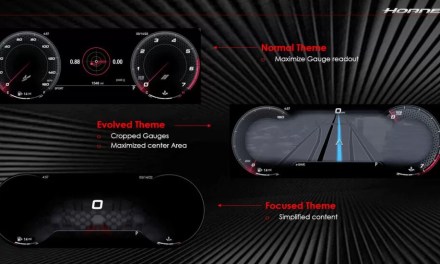The race to develop safe and reliable autonomous vehicles is unfolding in a virtual environment, according to engineering simulation software leader Ansys. It says that increasingly powerful digital engineering technology enables users to validate safety by virtually evaluating millions of known and unknown situations that mimic real-world driving scenarios.
To empower companies to further digital transformation efforts and achieve the majority of test driving required for compliance virtually, at CES 2024 Ansys is launching AVxcelerate Autonomy, co-developed with the BMW Group. The simulation company says it’s a first-of-its-kind, end-to-end solution capable of reducing cost and time-to-compliance for L2+, L3, and above ADAS/AV systems by 100,000 times.
Ansys AVxcelerate Autonomy is cloud-native, modular, and designed around an MBSE (model-based systems engineering) framework. Its flexible, open architecture follows the ASAM (Association for Standardization of Automation and Measuring Systems) openX standards. This industry benchmark facilitates seamless data transfer from the toolchain and supports integration into enterprise-level solutions via fixed APIs. The solution is in the process of becoming ISO 26262 certified, allowing companies to develop their workflows for L3 and above certification.
AVxcelerate Autonomy uses expansive scenario variation management capabilities to perform sensitivity and reliability analyses that help users determine the probability of ADAS/AV system failure and validate systems at scale to establish a case for safety justification. Designed for continuous safety validation, the solution can accommodate over-the-air updates for the lifecycle of the product.
Leveraging the power of a robust, adaptive exploration algorithm optimized in the cloud, Ansys says that users will be able to accelerate sensitivity analyses by 1000 times compared to traditional algorithms. By replacing most physical with virtual driving, it says that users can further accelerate development by 100 times to realize that potential 100,000 times reduction in cost and time-to-compliance.
“Navigating the complex rules around regulatory compliance by providing safety justification is one of the biggest challenges for automotive manufacturers,” said Walt Hearn, Senior Vice President of Worldwide Sales and Customer Excellence at Ansys. “Moving from one level of autonomy to the next requires extreme technological advances that are accessible, scalable, and easily implemented. The predictive accuracy and framework of Ansys AVxcelerate Autonomy can speed autonomous technology development to support the industry in realizing a future where traffic collisions are extinct.”
The Ansys solution could enable more leading-edge AV solutions like that recently announced by BMW. In late 2023, the automaker announced that Level 3 highly automated driving will be available in the new BMW 7 Series. The BMW Personal Pilot L3 is engineered to relieve the person at the wheel of driving tasks in certain situations, controlling the car’s speed, distance to the vehicle ahead, and lane positioning.
This new option could be ordered for the new 7 Series (excluding the i7 eDrive50 and i7 M70 xDrive) from December and will be fitted in vehicles from March. The highly automated driving function will be offered exclusively in Germany priced from about €6000.
The technology allows drivers to redirect their focus to other in-vehicle activities when traveling at up to 60 km/h (37 mph) on motorways with structurally separated carriageways.
In the 7 Series, the system gives drivers the option of concentrating on secondary in-vehicle activities like e-mails or engaging more deeply in telephone calls. They can use digital services like streaming videos on the central display during a journey. BMW says that this is the ideal solution for making good use of time spent in slow-moving traffic or “tailbacks” during daily motorway commutes.
Symbols appear on the driver display to indicate whether the Personal Pilot L3 is available. It is activated and deactivated by a steering wheel button. When the situation or stretch of road becomes unsuitable for the system, visual and acoustic signals let the driver know they have to take over control. The vehicle is brought to a controlled standstill if the driver does not respond.
In the new 7 Series, this new automated driving functionality is underpinned technologically by a new software stack, a more powerful computing platform, and a 5G link to the BMW Cloud. It uses a live HD map with regular updates aligned with extremely accurate GPS location and positioning.
Vehicles with the BMW Personal Pilot L3 are fitted with the latest-generation camera, radar, and 3D lidar sensors for monitoring the area around the vehicle and the situation on the road. This package of technology means that the Personal Pilot L3 works very reliably even in the dark, with various qualities unmatched by any rival, according to BMW.
- BMW 7 Series with Personal Pilot L3.
- BMW 7 Series hands-off and video watching using Personal Pilot L3.



























































































